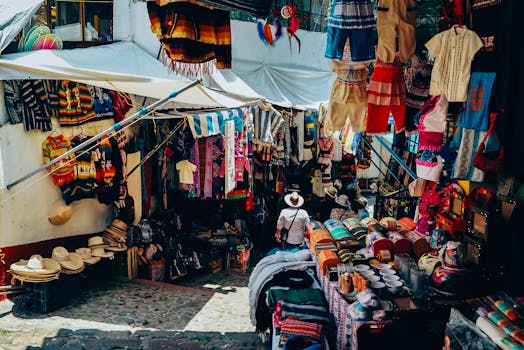Mobilize Your Neighbors: Organizing a Community Flea Market
In an age where consumerism often leads to clutter, organizing a flea market in your neighborhood can breathe new life into unused objects while fostering community spirit. A flea market not only provides a platform for residents to declutter their homes but also encourages social interaction and local commerce. This article will guide you through the steps to mobilize your neighbors and successfully organize a flea market in your yard or on your street.
Why Organize a Flea Market?
Flea markets have gained popularity for several reasons, making them an attractive option for community engagement. Here are some compelling benefits:
- Environmental Impact: By selling or trading unused items, you contribute to reducing waste and promoting recycling.
- Community Building: Flea markets create opportunities for neighbors to connect, share stories, and build relationships.
- Economic Benefits: Participants can earn extra cash while buyers can find unique items at affordable prices.
- Fun and Entertainment: A flea market can be a festive event, complete with food stalls, music, and activities for children.
Planning Your Flea Market
Successful organization requires careful planning. Here are the essential steps to get started:
1. Gather Support from Neighbors
The first step is to mobilize your neighbors. Here’s how you can do it:
- Host a casual meeting or a coffee gathering to discuss the idea.
- Create a social media group or a neighborhood app to share information and updates.
- Use flyers or door-to-door visits to reach out to those who may not be online.
2. Choose a Date and Location
Selecting the right date and location is crucial for maximizing participation. Consider the following:
- Choose a weekend or holiday when most people are available.
- Ensure the location is accessible and has enough space for vendors and shoppers.
- Check local regulations regarding street sales or yard sales to avoid any legal issues.
3. Promote the Event
Effective promotion can significantly increase attendance. Utilize various channels:
- Social media platforms like Facebook, Instagram, and Twitter.
- Local community boards and newsletters.
- Word of mouth—encourage neighbors to invite friends and family.
Setting Up the Flea Market
On the day of the event, organization is key to ensuring a smooth experience for both sellers and buyers. Here are some tips:
- Layout: Designate specific areas for different types of items (e.g., clothing, furniture, toys).
- Signage: Use clear signs to guide shoppers and indicate prices.
- Payment Options: Encourage sellers to accept various payment methods, including cash and digital payments.
Case Studies: Successful Community Flea Markets
Several communities have successfully organized flea markets, showcasing the potential of this initiative:
- Brooklyn Flea: This renowned flea market in New York City started as a small community event and has grown into a major attraction, featuring local artisans and vintage vendors.
- Portland’s Sunday Market: Established in 1974, this market has become a cultural staple, promoting local crafts and food while supporting small businesses.
These examples illustrate how a flea market can evolve from a simple neighborhood gathering into a vibrant community event that attracts visitors from afar.
Conclusion: Revitalize Your Community
Organizing a flea market in your neighborhood is more than just a way to declutter; it’s an opportunity to strengthen community ties, promote sustainability, and support local economies. By mobilizing your neighbors and following the steps outlined in this article, you can create a successful event that brings joy and connection to your block. Remember, the key to a thriving flea market lies in collaboration, creativity, and community spirit. So gather your neighbors, clear out those unused items, and get ready to make a positive impact in your neighborhood!
